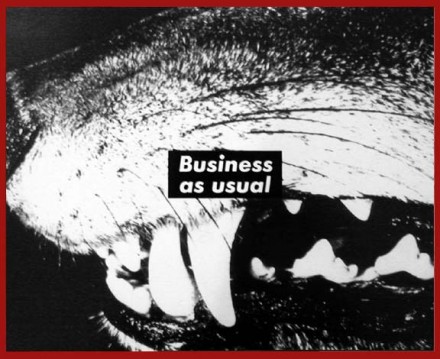
Barbara Kruger Untitled (Business as usual) (1987), all images courtesy of Skarstedt Gallery
On view in London’s Skarstedt Gallery is an exhibition of early large-scale, black and white photographic works from artist Barbara Kruger, early entries in Kruger’s ongoing project to challenge the visual language and power structures of consumerist culture and print advertising, always under the understanding that her works will themselves enter the marketplace as commodities.
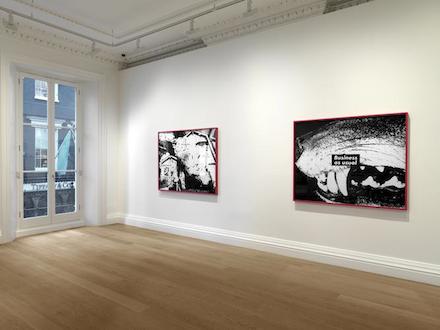
Barbara Kruger, Early Works (Installation View)
Kruger’s work has, for the extent of her career, examined the diverse intersections of power, identity, and sexuality through text and imagery, particularly in consumer advertising and the printed image. Using the same tools that the mass media employs, and drawing on her graphic design experience, she instead produces images with overlaid text meant to serve as social commentary. Kruger’s work here shows early entries into her practice, utilizing combinations of overtly violent imagery and more reserved ad copy.
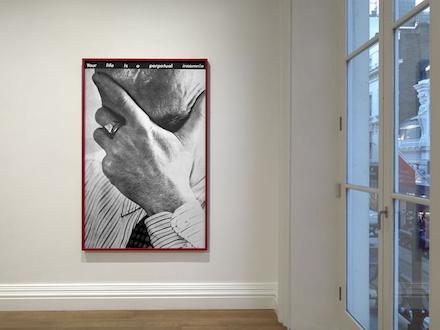
Barbara Kruger, Early Works (Installation View)
The works are displayed in her signature red enamel frames, so that, together with the bold Futura typeface, they come across as strong messages, similar to public service announcements or even fashion label advertisements. Kruger emphasizes that the visual language of media is one of the most powerful forces over our psychology today, and her work reflects it, embracing a consistent visual branding that ultimately defines not only her work, but the mode of its reception. Perhaps most interesting about Kruger’s work is the consistency of the alternative reading she has established for her work. Subversion and corruption of ad formats has, in Kruger’s practice, become its own mode of reception. Here, the works themselves feel just as tied to a history of both Kruger’s work and they are to broader print culture, a diagnostic offshoot of media culture that itself has established its own history and traditions.
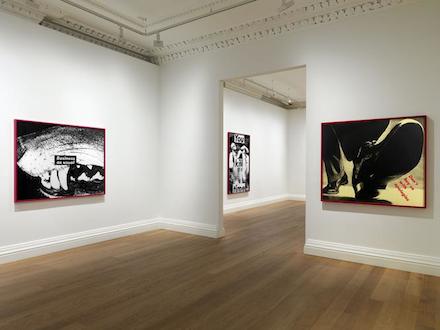
Barbara Kruger, Early Works (Installation View)
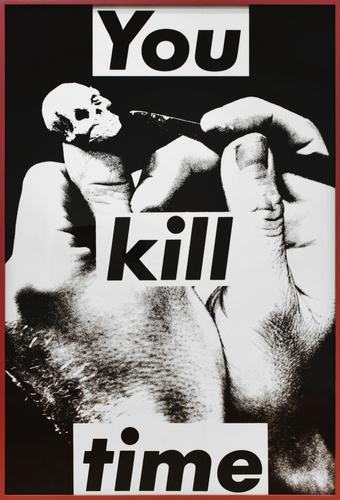
Barbara Kruger, Untitled (You Kill Time) (1983)
Blending visual subversion with actual protest iconography, Kruger’s poster for the 1989 Women’s March on Washington in support of legal abortion has become an iconic image in its own right, the slogan reading “Your body is a battleground.” In 1994, her L’empathie peut changer le monde (Empathy can change the world) was installed on a train station platform in Strasbourg, France, and as part of the Venice Biennale in 2005, Kruger installed a digitally printed vinyl mural across the entire facade of the Italian pavillion, so that the English and Italian words for “Money” and “Power” climbed the massive columns. In each, Kruger’s interaction with the formats of advertising take on their own space and history, both of which are presented in their infancy here.
The current exhibition at Skarstedt in London will continue through April 11, 2015.
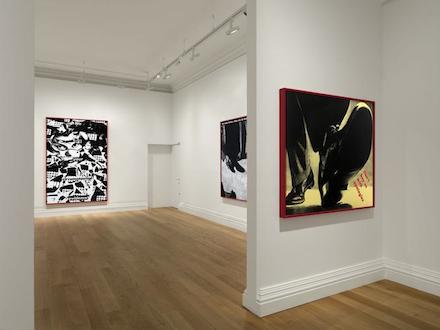
Barbara Kruger, Early Works (Installation View)
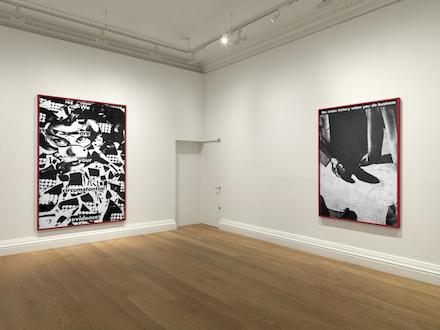
Barbara Kruger, Early Works (Installation View)
— E. Baker
Related Links:
Exhibition Page [Skarstedt]



